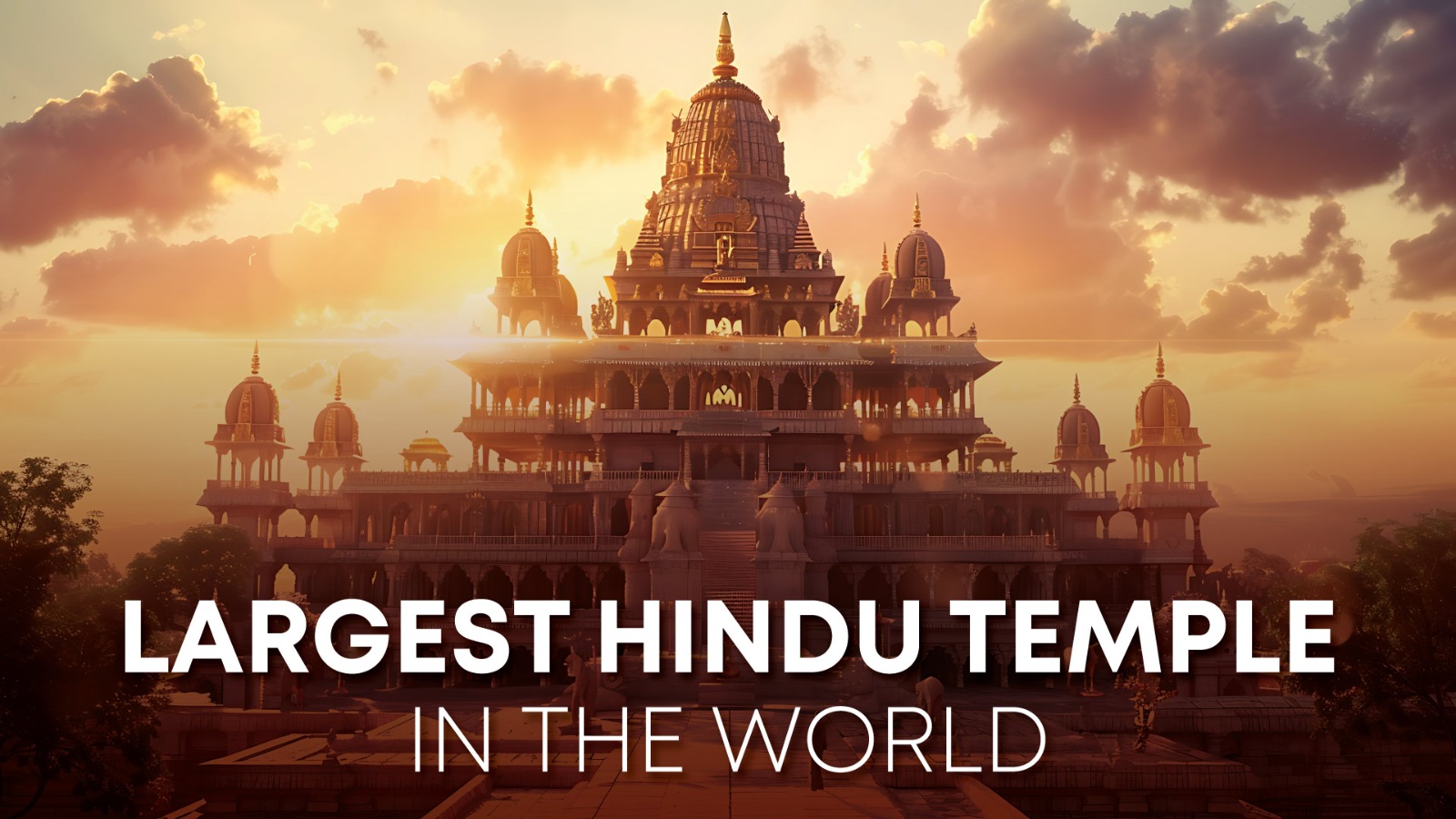
Across the world, we can find many astonishing Hindu temples. These are symbols of devotion and skill, displaying the abundant cultural legacy linked with Hinduism. Starting from huge towers that reach high up in the sky to detailed carvings on all surfaces one sees inside – these places for worship are not just religious spots but also feats of construction which leave those who come to them speechless at times. In this blog post, we will look at most largest Hindu temple in the world, with every single one a masterpiece in its way.
Largest Hindu Temple in the World
1. Angkor Wat
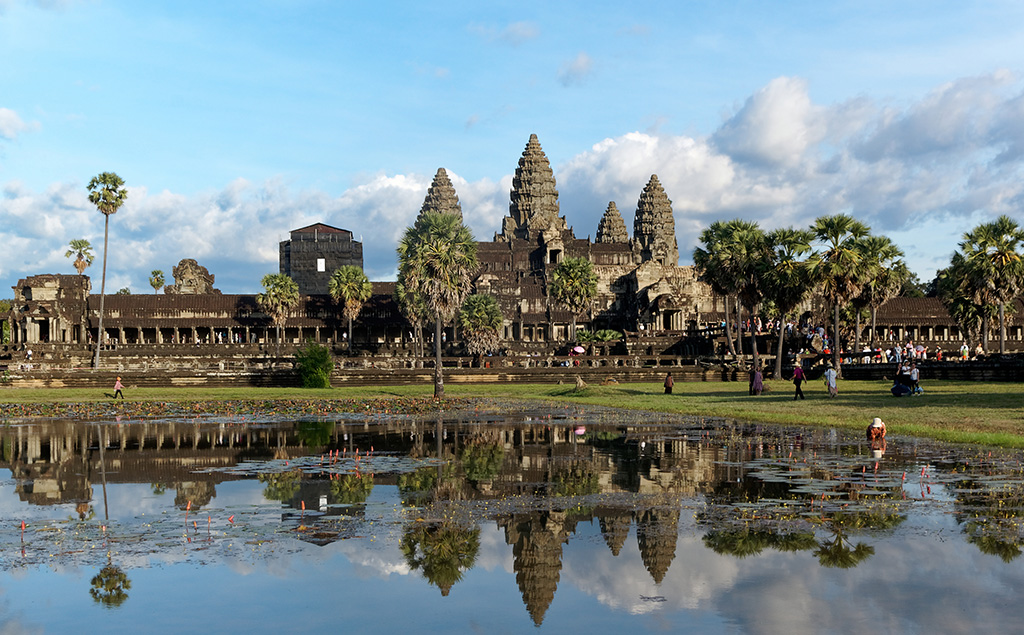
Location: Angkor, Cambodia
Area: 1,626,000 m²
Angkor Wat in the land of Cambodia is an important place, is the largest Hindu temple in the world and has caught Guinness World Records’ attention for being crowned the world’s biggest spiritual sanctuary.
This architectural masterpiece was built by King Suryavarman II around a thousand years ago, initially dedicated to Vishnu but then transformed into a Buddhist temple. It spreads across approximately 1,626,000 meter square. Its design combines a “temple-mountain” style with galleried ones inspired by Hindu mythology’s Mount Meru which holds profound cultural significance in their society.
After facing decline due to the disappearance of the Khemar Empire where Angkor Wat resided, this architectural wonder lay dormant until being meticulously restored during much of the twentieth Century. Now one of the UNESCO World Heritage Sites, it annually attracts over 2.5 million visitors worldwide, symbolizing Cambodia’s national identity and rich cultural legacy.
2. BAPS Swaminarayan Akshardham (New Jersey)
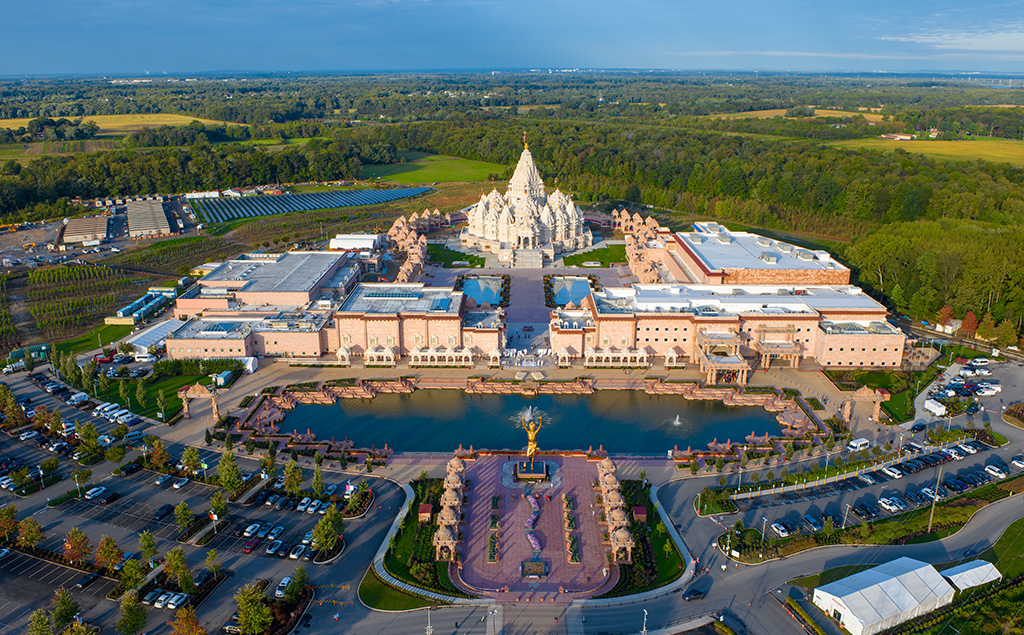
Location: Robbinsville Township, New Jersey, USA
Area: 72,843 m²
Swaminarayan Akshardham in Robbinsville, New Jersey, showcases remarkable Indian architecture and spirituality. Completed in 2014, it is North America’s largest non-Indian Hindu temple complex spread across a stunning expanse of 83 acres.
The main attraction here is an impressive mandir (temple) reaching skyward at 85 feet tall – sculpted intricately from Italian Carrara marble and red sandstone pieces, totaling over 34000.
Besides this grand temple stands as a traditional shrine, research center, museum displaying fascinating exhibits, and lush gardens. These features harmoniously create an atmosphere of peace for people irrespective of their culture or religion.
3. Sri Ranganathaswamy Temple
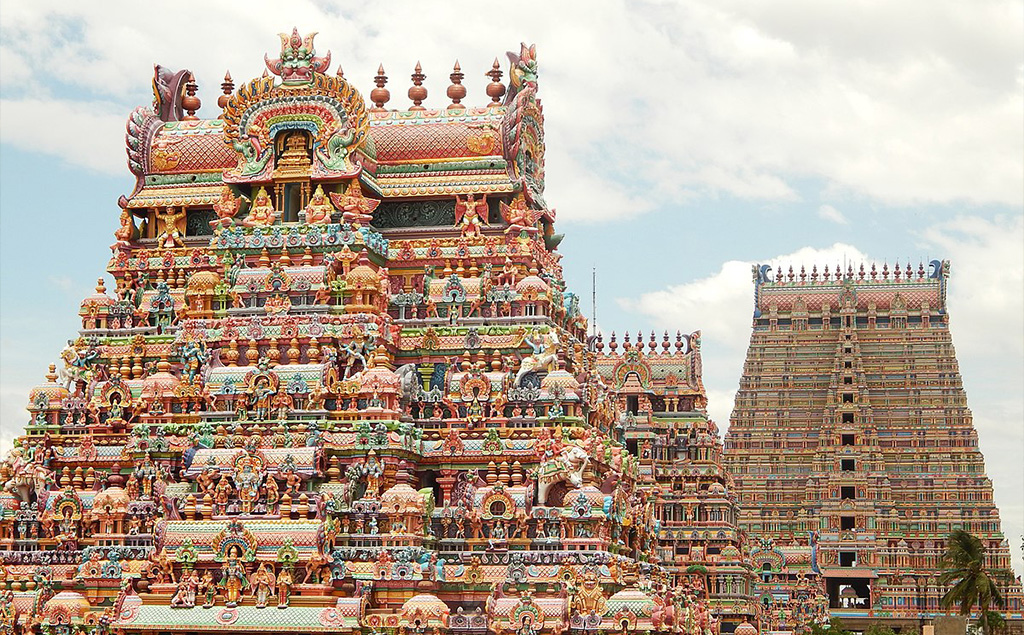
Location: Srirangam, Tamil Nadu, India
Area: 631,000 m²
The Ranganathaswamy Temple at Srirangam, Tamil Nadu is a remarkable architectural wonder and known to be one of the largest Hindu temple in the world. This majestic site is dedicated to Lord Vishnu and spans an impressive 156 acres with seven concentric walls adorned by towering gopurams (gateway towers) decorated with intricate sculptures, making visitors speechless at its sheer scale and magnificence.
As you wander through the temple’s expansive corridors, over 600 ancient inscriptions etched on the walls tell a story of this sacred site that has been an esteemed place for worship across centuries. The star attraction is the magnificent southern tower standing at an astonishing height of 236 feet – making it South Asia’s tallest structure.
4. Sri Lakshmi Narayani Golden Temple
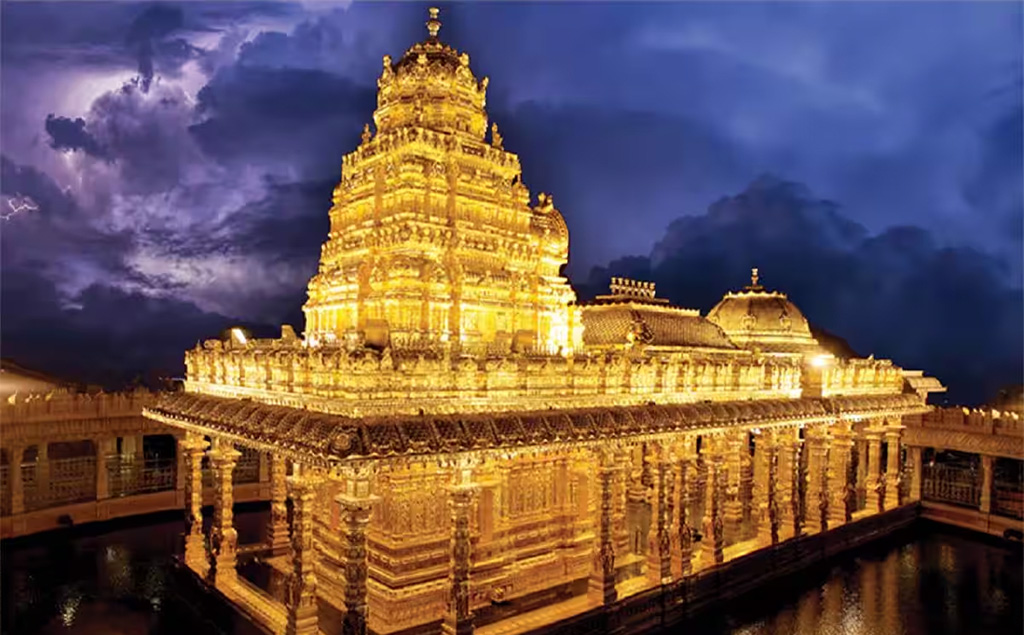
Location: Sripuram, Tamil Nadu, India
Area: 404,685 m²
The Sri Lakshmi Narayani Golden Temple in Sripuram, Tamil Nadu is an impressive architectural masterpiece reflecting India’s rich cultural heritage. This magnificent temple stands as a tribute to the goddess Lakshmi Narayani, Lord Vishnu’s consort, and showcases its glorious golden facade that radiates like a beacon of spirituality from every angle. Following Dravidian architectural principles beautifully, it features intricate carvings with meticulous attention given to even the tiniest details on each sculpture or tower adorning this wonderland of art and architecture.
Located within concentric rectangular enclosures – all unique in their way – is its main shrine that stands majestic amidst a complex housing numerous other sanctums, water bodies, and architectural marvels which are a testament to the skillful craftsmanship of Indian artisans.
Inside lies the sanctum which houses a 6-meter effigy of Ranganatha reclining elegantly upon Adishesha, the serpent in its coils, intricate designs, and ornaments reflecting finesse at every turn within this spiritual abode that draws millions towards it. Drawing millions yearly – especially during its annual 21-day festival, it holds great significance beyond religion. Nominated for UNESCO World Heritage Site status and winner of the UNESCO Asia Pacific Award Merit in Cultural Conservation (2017), this architectural marvel represents India’s diverse religious beliefs & artistic heritage beautifully.
5. Prambanan
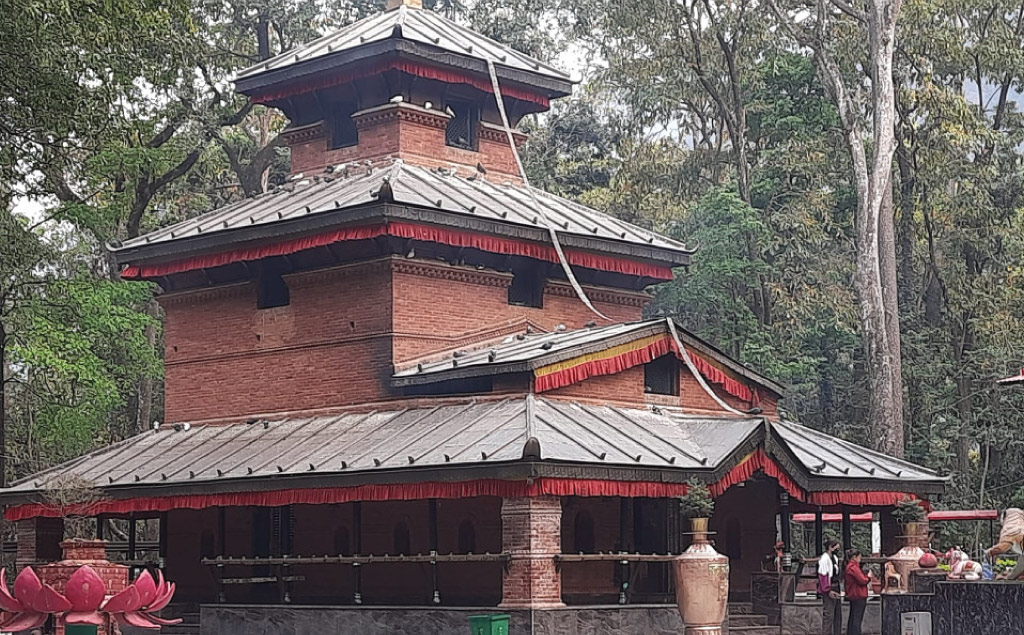
Location: Java, Indonesia
Area: 398,000 m²
The Prambanan Complex in Java, which is part of Indonesia, shows the great beauty of the Hindu building style. It was made in the 10th century when the Sailendra family was powerful. This big place of worship is the biggest Hindu temple site in Indonesia and also known to be the largest Hindu temple in the world. Composed of more than 200 individual stone structures, this group is focused around the tall Loro Jonggrang temple. This building is for worshiping the Trimurti of the Hindu religion – the holy trio of gods Shiva, Vishnu, and Brahma.
Prambanan, with detailed stone carvings and reliefs that skillfully portray parts from the great story Ramayana, stands out as not just an architectural wonder but also shows a deep reflection of Java’s wealthy cultural and spiritual past. This place on the UNESCO World Heritage list keeps drawing people from around the world because of its grand look, decorative features, and lasting religious meaning. Despite the temples facing destruction by earthquakes and volcanic activity throughout the years, those sites have been carefully fixed to look just like they did before. They stand proudly, showing how strong and brave people can be when they work to fix what’s been broken.
6. Chhatarpur Temple
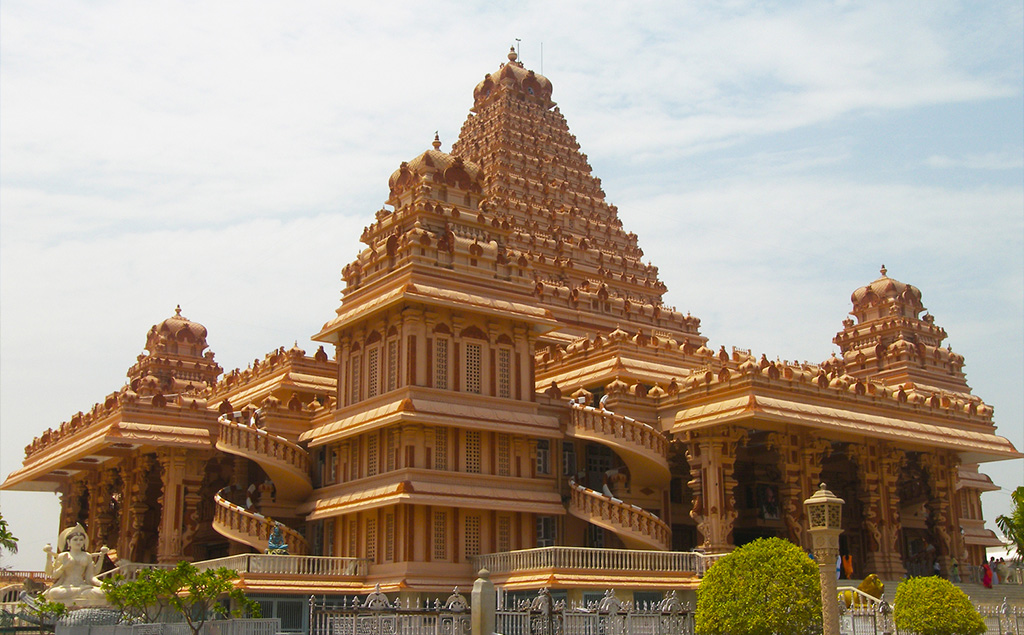
Location: South Delhi, India
Area: 280,000 m²
The majestic Chhatrapuri temple or Shri Aadya Katyayani Shakti Peetham is an expansive 28-hectare (70 acres) Hindu complex in South Delhi, India, putting it on the list of largest Hindu temple in the world.
Built entirely of gleaming white marble with intricate jaali work adorning it from end to end and boasting over 3 main areas housing more than 20 sanctums dedicated to various deities such as Rama, Ganesha, Shiva, and Hanuman alongside Radha-Krishna – this grand temple primarily pays homage to Goddess Katyayani form of Durga.
The spiritual heart lies in the principal shrine enshrouding Maa Katyaani and throngs with devotees during bi-annual Navratri celebrations seeking divine blessings from Mother deity herself, creating an atmosphere steeped richly within faith & piety! This architectural masterpiece stands tall as a testament to millions’ devoted spirits.
7. BAPS Swaminarayan Akshardham (Delhi)
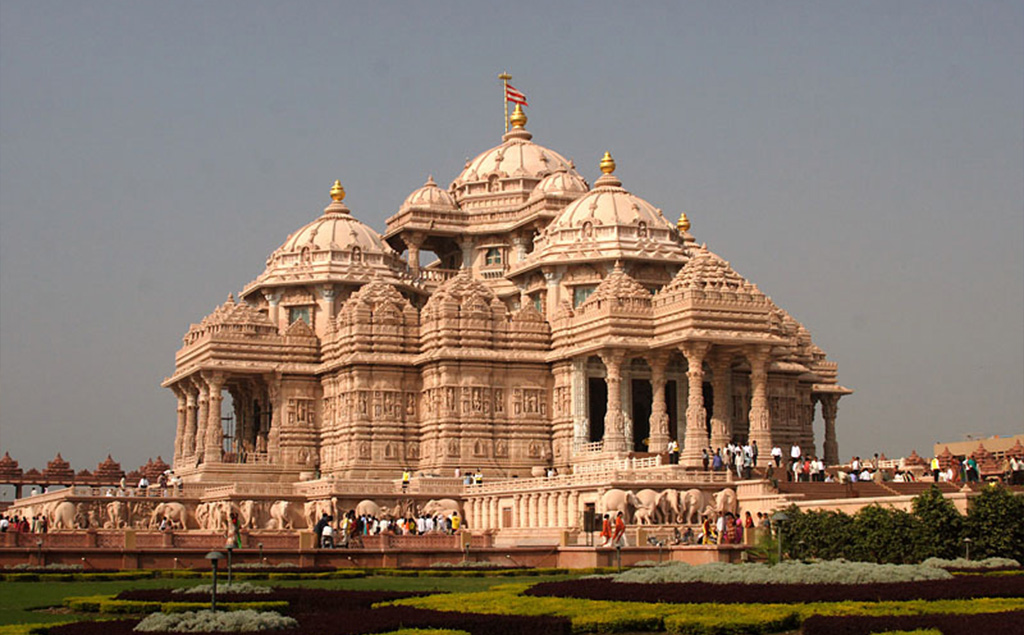
Location: Delhi, India
Area: 240,000 m²
The Swaminarayan Akshardham, one of the largest Hindu temple in the world, shows off cultural and spiritual legacy from India. This big temple complex was opened in the year 2005, it has many detailed carvings and is dedicated to Swaminarayan.
The Akshardham Mandir at this place, which forms its main part, appears even more serene as it stands amidst gardens of great beauty and calm lakes.
It combines history and the present, giving people a spiritual experience through art displays, prayer gatherings, and cultural events. Akshardham is not just about being a temple made by Pramukh Swami Maharaj with help from numerous volunteers but it also represents an area for artistry, knowledge, and illumination.
8. Prem Mandir, Vrindavan
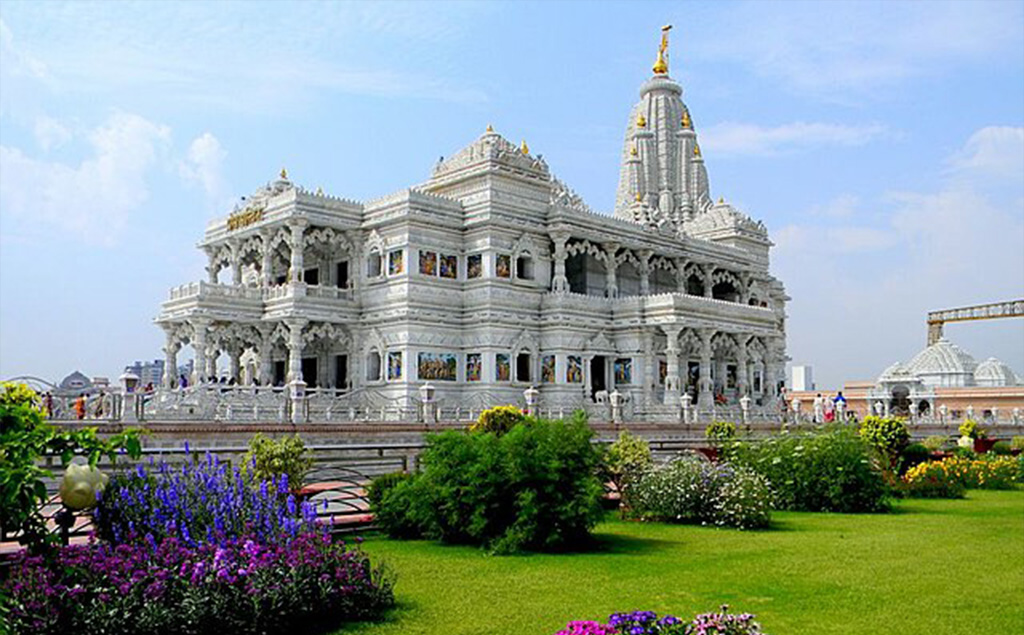
Location: Vrindavan, Uttar Pradesh, India
Area: 222,577 m²
Among sacred Vrindavan’s wonders stands Prem Mandir, a temple complex enshrining Lord Krishna and Radha’s eternal love. Established by Jagadguru Shri Kripalu Ji Maharaj, this architectural marvel blends Rajasthani and Gujarati styles with exquisite carvings.
Its pillar-less satsang hall hosts 25,000 devotees. Surrounded by lush gardens and serene lakes, the temple emanates tranquility. Along the circumambulatory platform, 48 carved panels depict divine pastimes. Inside and out, vivid portraits bring the celestial couple’s miracles alive. Drawing pilgrims and travelers alike, Prem Mandir immerses visitors in spiritual awakening and the timeless essence of divine love’s sublime embrace.
9. Kalika Bhagawati Temple

Location: Baglung, Nepal
Area: 208,185 m²
The Kalika Bhagawati Temple in Baglung, Nepal, is a revered Hindu pilgrimage site known for its deep religious, historical, and cultural significance. Erected in the 16th century by the influential King Pratap Narayan, the temple is dedicated to the goddess Kali, who symbolizes strength and protection in Hindu belief. Situated amidst lush, dense forests near the Kali Gandaki River, the temple draws thousands of pilgrims, especially during auspicious festivals like Navaratri, when grand celebrations and sacred rituals take place.
Beyond its role as a spiritual center, the temple complex features smaller shrines dedicated to deities like Lord Shiva and the divine pair Radha-Krishna. Devotees come seeking the goddess’s blessings, protection, and spiritual fulfillment, often relying on her divine intervention for life’s challenges. The temple also serves as a focal point for tantric practitioners, offering a place to pursue mastery over spiritual realms. As a prominent tourist attraction and a popular tourist attraction , the Baglung Kalika Bhagawati Temple encapsulates Nepal’s rich heritage, blending spirituality, historical importance, and vibrant cultural traditions.
10. Besakih Temple
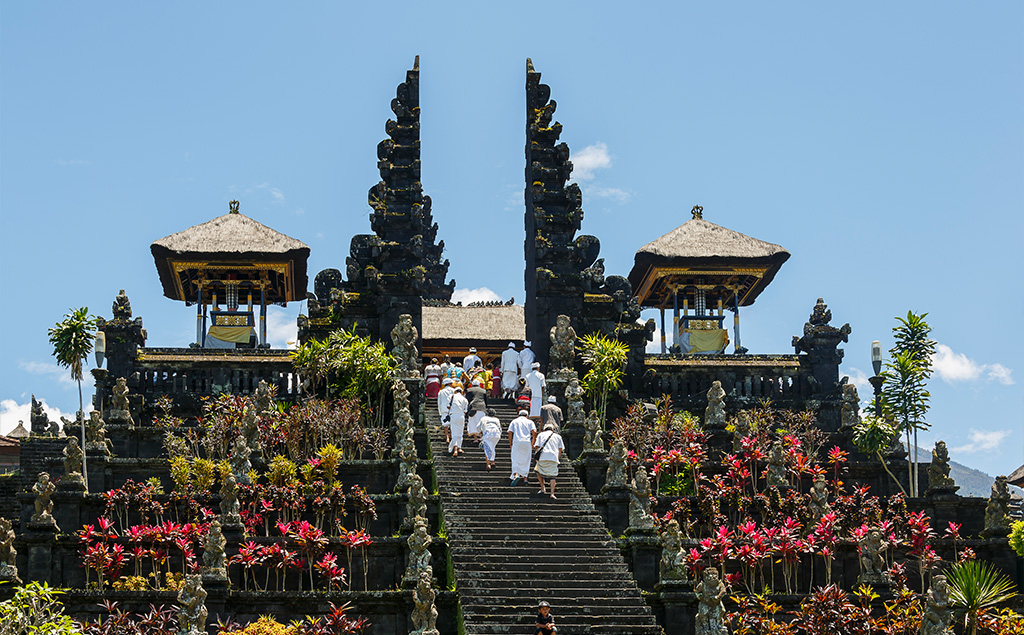
Location: Mount Agung, Bali, Indonesia
Area: 200,000 m²
Besakih Temple, positioned on the inclines of Mount Agung in east Bali, is one of the largest Hindu temple in the world and also the greatest and holiest temple for Balinese Hinduism. It is composed of a collection of 23 temples with Pura Penataran Agung functioning as its main temple, this one stands out for both size and significance.
The temple is thought to have been in use since prehistoric times. It has been reconstructed multiple times, notably after the 1917 earthquakes and the 1963 volcanic eruption that saved it from ruin. This place holds high religious importance for Balinese people, so it attracts many visitors too.
Conclusion
From the old magnificence of Angkor Wat to modern wonders like Swaminarayan Akshardham, and also Sri Lakshmi Narayani’s golden splendor, these temples show off Hindu architecture in all its diversity. They are a sign that the strength of the Hindu faith is long-lasting.
Each temple has its own story and cultural importance, allowing us to peek into this diverse mix of Hindu traditions. These places hold a deep spiritual bond, which is why they have remained significant for many years.
Many of these temples keep on inspiring wonder and dedication in the hearts of Hindus worldwide as they act like a link between history and today’s world, an example showing how beautiful and valuable Hindu culture truly is.

![Well, #GrowWithPropacity is here to educate you all about all things Real Estate.
Follow to stay updated in Real Estate!
[Real Estate, Construction, Real Estate Tips, Real Estate Growth, Real Estate Industry, Carpet Area, Super Area, Built Up Area, Home Buying Tips, Home Buyers, Property]](https://propacity.com/blogs/wp-content/plugins/instagram-feed/img/placeholder.png)
Leave a Reply